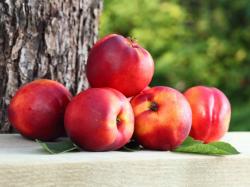Read, Learn, Choose, But Eat More Fruits & Veggies With Confidence
September 25, 2012 | 3 min to read

Watsonville, CA- A recent Stanford University nutritional comparison study has generated intense consumer interest about the differences between conventionally and organically grown fruits and vegetables. But, a website – safefruitsandveggies.com – was created specifically for consumers who are interested in science based information and perspectives about the safety of both conventional and organic produce.
“The Alliance for Food and Farming (AFF) wanted to create an information resource for people so that they can make educated shopping decisions for themselves and their families,” says Marilyn Dolan, Executive Director for the AFF. “We think the information presented on safefruitsandveggies.com will reassure consumers that they can choose either organic or conventionally grown products with confidence. The science and the facts support that both production systems are very safe,” Dolan explains.
The safefruitsandveggies.com website features information from experts in the fields of toxicology, nutrition, risk analysis, consumer attitudes, organic and conventional pesticide usage trends and farming. “One of the most popular features is the calculator function on the website,” Dolan says. This function allows consumers to click on who they are (man, woman, teenager or child) and then select their favorite fruit or vegetable. The tool then calculates the number of servings you would have to eat in a day and still not see any effect from pesticide residues. “The calculations show a consumer would literally have to eat hundreds to thousands of servings – no matter if you are an adult or a child – and still not see any health impact from pesticide residues,” Dolan adds.
The calculator function and corresponding report was developed using information from the United States Department of Agriculture’s (USDA) Pesticide Data Program. The USDA’s monitoring data was analyzed by Dr. Robert Krieger, a toxicologist who heads the Personal Chemical Exposure Program at University of California, Riverside. It should be noted that Dr. Krieger was asked to analyze the highest residue levels found by USDA.
Another report “Scared Fat” features new consumer research results concerning how fear based messaging and marketing tactics are actually becoming a barrier to consumption of healthy fruits and vegetables, especially among low income consumers. “The survey showed that almost 10% of low income consumers stated they would reduce consumption of fruits and vegetables after hearing commonly used messaging that calls into question the safety of fruits and vegetables,” Dolan says.
Dolan points out that this month the USDA’s Economic Research Service issued a report that showed 10% of American households were not able to provide their children with “adequate, nutritious” food at times during 2011. “The USDA report illustrates the real issue,” Dolan says. “Low income consumers already struggle to put healthy and nutritious foods on their tables. This is why reassurance that more affordable produce is nutritious and safe is of crucial importance if we are to improve the diets of Americans and lower obesity rates. Misguided safety fears cannot become another barrier to increasing consumption of the very foods that health experts say we should be eating more of,” Dolan explains.
Other popular sections on the website include “Ask the Experts,” which features videos of farmers explaining how they control pests and diseases on their organic and conventional farms, a list of the most popular fruits and veggies with explanations on their nutritional value, regular blog postings and consumer food safety tips.
“These are only a few examples of the information that can be found on safefruitsandveggies.com and there is just so much more,” Dolan explains. “We hope safefruitsandveggies.com provides consumers with a place that they can go to read and learn more so they can make educated shopping choices,” Dolan says. “But we also hope that this information helps them to include more fruits and vegetables in their diets with confidence.”
The Alliance for Food and Farming is a non-profit organization formed in 1989 which represents organic and conventional farmers and farms of all sizes. Alliance contributors are limited to farmers of fruits and vegetables, companies that sell, market or ship fruits and vegetables or organizations that represent produce farmers. Our mission is to deliver credible information to consumers about the safety of all fruits and vegetables. We do not engage in lobbying nor do we accept any money or support from the pesticide industry. In the interest of transparency, our entire 2011 tax return is posted on safefruitsandveggies.com.
Source: Alliance for Food and Farming
